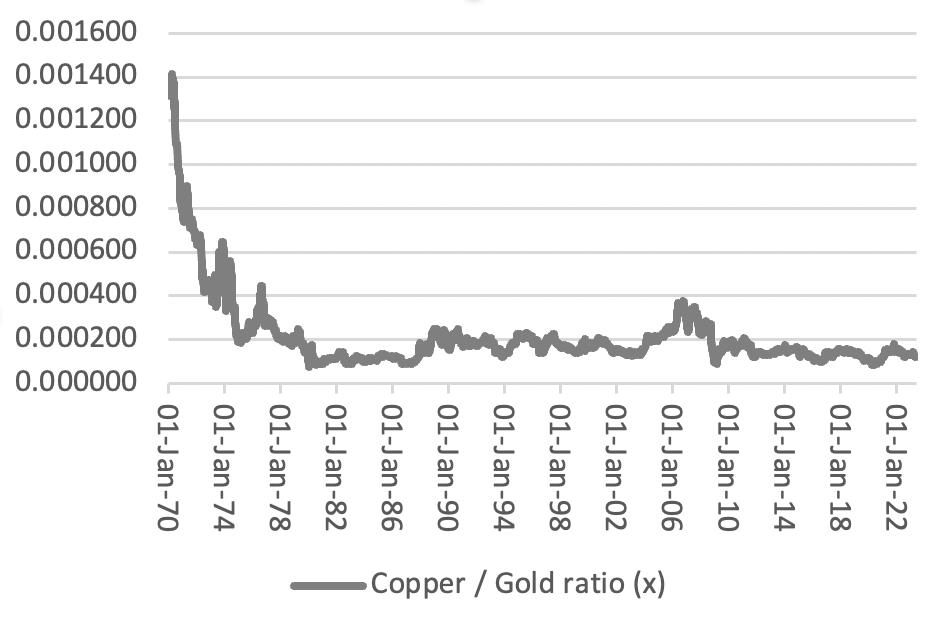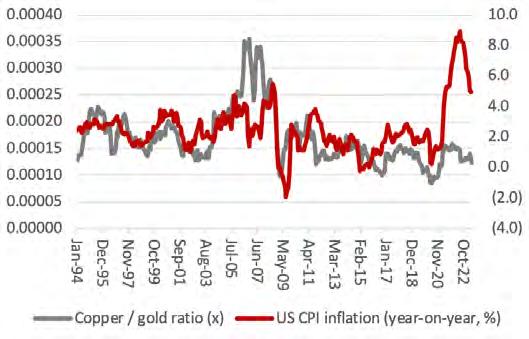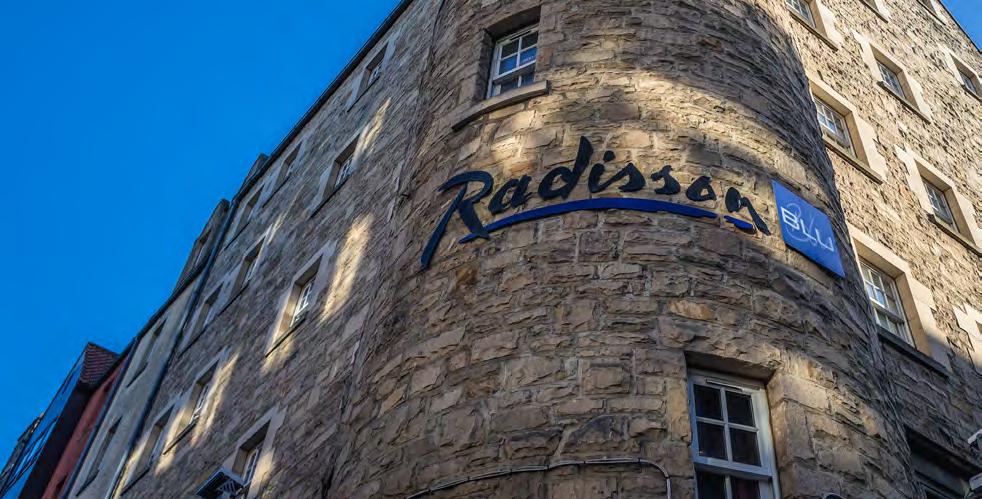PROPERTY STOCKS & FUNDS
Why now is the time to buy


Why now is the time to buy

Nearly four decades of bottom-up fundamental investing.
Asset Value Investors (AVI) has managed the c.£1.1* bn AVI Global Trust since 1985. Our strategy has remained consistent for this period: to buy quality companies held through unconventional structures, trading at a discount. The strategy is global in scope, and we believe that attractive risk-adjusted returns can be earned through detailed research with a long-term mind-set.
The world is filled with challenges and volatility, with a war on European soil and rising interest rates alongside high levels of inflation. Despite the challenging market conditions, we continue to find good investment opportunities.
Our proprietary research process with a focus on mispriced assets that trade at a discount to net asset value enables us to filter through the numerous companies, to distil the market down to a more manageable universe.
AVI’s well-defined, robust investment philosophy helps to guide investment decisions. An emphasis is placed on three key factors:
(1) companies with attrac-

tive assets, where there is potential for growth in value over time; (2) a sumof-the-parts discount to a fair net asset value; and (3) an identifiable catalyst for value realisation. A concentrated high conviction core portfolio of c. 30± investments allows for detailed, in-depth research which forms the cornerstone of our active approach.
Once an investment has been made, we seek to establish a good relation-
ship and actively engage with the managers, board directors and, often, other key shareholders. Our aim is to be a constructive, stable partner and to bring our expertise - garnered over almost four decades of investing in asset backed companies - for the benefit of all. The approach is benchmark-agnostic, with no preference for a particular geography or sector which allows us to seek out the best
AGT’s long-term track record bears witness to the success of this approach, with a NAV total return well in excess of its benchmark. We believe that this strategy remains as appealing as ever and continue to find plenty of exciting opportunities in which to deploy the trust’s capital.
• Gilt market signals the alarm over a surprise rise in UK core inflation
• Nvidia is world’s top AI pick after detailing huge spike in technology demand
• Why insurers could face higher catastrophe claims this year and into the future

• Investors chase Mitchells & Butlers shares higher as consumers return to pubs

• Disappointment with Future sees shares down over 40% year-to-date
GREAT IDEAS New: Ruffer Investment Company / Rainbow Rare Earths Updates: SRT Marine Systems 15 FEATURE Boohoo’s share price has collapsed. Time to buy?
18 EDITOR’S VIEW It’s time to prepare portfolios for a second-half market correction
20 RUSS MOULD Copper/gold ratio: what does it mean and what is it telling us?
23 FEATURE Property stocks & funds: why now is the time to buy
30 FUNDS How fund manager James Bullock is key to Lindsell Train’s future
33 FUNDS How different funds approach the emerging markets opportunity



think STV’s shares are too cheap given its growth potential
I’ve got eight pensions: should I consolidate them into a single pot?

W esuggestedatthestartof2023that provecommercialpropertystockscould tobeagoodbetthisyear, withvaluationsofferingsignificant levelsupwardreversionpotentialfromtheirdepressed historicanddividendyieldsatthetopendoftheir anythingWhilerange.valuationshaveimprovedslightly,ifsentimentisevenmorenegativethanit highwasinJanuary,especiallyafterApril’sstubbornly EnglandinflationdatawhichsparkedfearstheBankof mayhavetohikeinterestratesfurthertoreininprices.
beYet,atanoperationallevel,thepicturecouldn’t tellingmoredifferent,withhalfadozenmanagers SharesthattheUKcommercialpropertymarketisingoodshape. Wethinkthatforinvestorswhocanafford
falltolookpastthecurrentdisparitybetweenthe marketinnetassetvaluesandthestrengthofthe ‘ontheground’,therewardsintermsof upsidepotentialandinflation-matchingyieldsare substantialalthoughnotentirelyrisk-free. HAVE VALUATIONS BOTTOMED?Oneoftheproblemstroublingthecommercial fallpropertysectorinthelastsixmonthsisasharp discovery’.intransactions,whichmeansalackof‘price Usually,theUKmarketisquiteactivewith buyersfromtheprivateequityworld,family theiroffices,pensionsfundsandsoonvyingtoget streams.handsonrealassetswithlong-termincome However,the‘mini-Budget’lastautumntogether
Who’s who in UK real estate and which names are best placed for a recovery.
The bull and bear case for Boohoo
Examining the attempts by the online fast fashion play to get back on track and whether they can succeed.
Did you know that we publish daily news stories on our website as bonus content? These articles do not appear in the magazine so make sure you keep abreast of market activities by visiting our website on a regular basis.


Over the past week we’ve written a variety of news stories online that do not appear in this magazine, including:
Wecomparethreefundsand theyinvestmenttrustsandexplainhow spotopportunities
Tishelong-termcaseforemergingmarkets witheasytograsp–lessmatureeconomies scopemoreyouthfuldemographicshave forgreatereconomicgrowthas theydevelop.Therearealsoshort-termtailwindsthanks tothedollarweakening(akeyfactorasmany countriesinthedevelopingworldhavetheirdebt denominatedindollars)andtheChineseeconomy fullyreopeningafterCovid.
However,investinginthisspacecanbearocky ride.Thepatchystarttotheyearforemerging ofmarkets–demonstratedbytheunderperformance theMSCIEmergingMarketsindexversusits MSCIWorldcounterpart–reflectstheirinherent volatility.Italsospeakstotheadvantagesof intopursuingamorerefinedapproachandtapping theexpertiseofanactivemanagerwith stockpickingskillsratherthansimplytrackinga broadindex. fundsTherearemorethan60investmenttrustsand withemergingmarketsfocusavailableto toUKinvestors,allwiththeirownindividualapproach Theachievingreturns. newestnameisAshokaWhiteOaksEmergingMarkets(AWEM),whichinAprilthisyearbecamethefirstinvestmenttrusttojointheUK stockmarketin16months. Againstadifficultmarketbackdropthetrustonly butraised£30millionagainstatargeted£100million expertformerGoldmanSachsemergingmarkets managerPrashantKhemka,whosetupparentasset WhiteOakCapitalandwhoisrunning thefund,saysthisisnotaproblemandpointsout WhiteOak’sAshokaIndiaEquity(AIE)truststarted with£46millionagainstatargeted£100millionfive yearsagoandhasnowmorethanquadrupledthat
totalat£200millioninassets. receiveThefeestructurewillseetheinvestmentadviser an‘alphafee’paidinordinarysharesand basedonthetrust’soutperformanceoftheMSCI EmergingMarketsNetTotalReturnindex(in sterling)overdiscretethree-yearperiods. MarketsAswewriteAshokaWhiteOaksEmerging hasyettopublishafactsheetonitsportfolioandwhenSharesspoketoKhemkain May,histeamwerestillintheprocessofusingthe moneyraisedfromthestockmarketflotationto investinstocks. Hesays:‘Nowisnotabadtimetobeinvestingin thanemergingmarkets.Thefundamentalsarestronger thedevelopedworld,withlessrecessionrisk, lowerdebt,lowerlevelsofinflationandvaluations areatthelowendoftherange.’ stocksHepointsoutthatemergingmarketfinancial areona‘muchstrongerfooting’thanin thedevelopedworldandarguesthatbecause emergingmarketsarelessefficientagoodfund managerinthisspacehasagreaterchanceof deliveringoutperformancethanasimilarlyskilled managerindevelopedmarkets.

FOCUSONCORPORATEGOVERNANCE Ashoka’sinvestmentstrategyhasabigfocuson thatcorporategovernancebutKhemkaiskeentostress governanceissuesarenotrestrictedtothe

Taking a look at the different approaches as a new investment trust joins the universe of UK products targeting stocks in the developing world.
with record sales and strong performance in Canada

ASOS

Capital at risk.
That’s the sweet sound of taking control of your investments with AJ Bell.



Unexpectedly sticky UK inflation figures are wreaking fresh havoc in the UK government bond (gilt) market and raise the prospects of higher borrowing costs for longer for the Government, businesses and consumers.
A big driver behind the continuing surge in prices is food and there was at least a glimmer of hope here as the latest shop price data from the British Retail Consortium (30 May) saw annual food inflation fall from 15.7% to 15.4%.
On 24 May UK CPI (consumer price inflation) came in at 8.7%, down from 10.1% in the previous month but higher than the 8.1% which had been forecast. More significantly, core CPI increased from 6.2% to 6.8% against the flat reading which had been pencilled in.
Gilt yields have moved to within sight of the highs reached in the wake of last September’s disastrous mini-Budget in the wake of the data point. There are now expectations in some quarters the Bank of England will increase rates by 25 basis points at its next meeting on 22 June.

Just to add to the gloomy mood, US investment
bank Goldman Sachs is forecasting UK inflation will not be back below the Bank of England’s 2% target for at least two-and-a-half years thanks to a sluggish decline in food price inflation and a tight labour market. Chancellor Jeremy Hunt is on record as saying a recession is a price worth paying to get inflation under control.
The higher cost of borrowing has implications for the millions of homeowners still on fixed-rate mortgages who either must fix at a much higher rate when their term expires or move on to the punitively expensive standard variable rate, as well as for people looking to get a loan to buy a new house.
In turn this has a knock-on effect on the housebuilders, given the dampening impact this is likely to have on the property market. Earlier in the year a drop in gilt yields and competition in the mortgage market had helped drive rates to more affordable levels and supported a recovery in the sector.
Since the inflation figures were released, shares of the big housebuilders are between 5% and 6.5% lower.
The retailers also took a hit off the back of the stickier-than-anticipated inflation given the wider implications for consumers’ purchasing power.
Consultancy Capital Economics commented: ‘The most troubling aspect of April’s inflation data was evidence that price pressures are becoming increasingly domestically generated. Accordingly, we now expect the Bank of England to raise interest rates further than we previously thought, from 4.50% now to a peak of 5.25%.’ [TS]
Nvidia (NVDA:NASDAQ) is closing in on a trillion dollar market valuation after revealing the scale of interest it is seeing from customers for artificial intelligence (AI) technology.
The Santa Clara-based chip designer unveiled the explosion of AI-powered technology demand in first quarter results (24 May) that blasted past analyst forecasts. Yet it was Nvidia’s 50% jump in second quarter guidance that really took investors’ breath away and sent the share price skyrocketing.
Nvidia’s share price has rallied almost 30% since the news to record levels above $400, piling an extra $240 billion onto the company’s market valuation and breaking the trillion-dollar mark, joining Apple (AAPL:NASDAQ), Microsoft (MSFT:NASDAQ), Amazon (AMZN:NASDAQ) and Alphabet (GOOG:NASDAQ) in this most exclusive of clubs.
Nvidia announced EPS (earnings per share) of $1.09 for the three months to 30 April 2023 on revenue of $7.19 billion. Analysts polled by Investing.com anticipated EPS of $0.92 on revenue of $6.52 billion, implying beats of 18% and 10% respectively.
First quarter revenue from the chip designer’s data centre business hit a record $4.28 billion, up 14% from a year ago and 18% higher versus the previous quarter. That helped offset weakness in its gaming business, where revenue dropped 38% to $2.24 billion from a year ago.

Demand for AI everything is surging thanks to the launch of OpenAI’s ChapGPT and other chatbot technologies. Shares explained some of the everyday use cases in AI in a recent feature and Nvidia could not resist the temptation to fuel the market’s excitement.
‘A trillion dollars of installed global data centre infrastructure will transition from general purpose to accelerated computing as companies race to apply generative AI into every product, service and business process,’ the company said.
‘Our entire data centre family of products is in production. We are significantly increasing our supply to meet surging demand for them,’ it added.
Nvidia flagged an AI ‘inflection point’ back in February 2023, setting up for broad adoption reaching into every industry.
‘From start-ups to major enterprises, we are seeing accelerated interest in the versatility and capabilities of generative AI,’ Nvidia chief executive Jensen Huang said at the time.
Yet even Huang must be stunned by how fast companies are jumping on the technology industry’s next big thing. This is evident from the firm’s second quarter revenue guidance hike of more than 50%. Nvidia said it anticipated second quarter revenue of around $11 billion, ‘plus or minus 2%.’ Consensus had been pitched at $7.13 billion. [SF]

Nvidia’s 50% jump in second quarter guidance that really took investors’ breath away”
Each year, natural disasters around the world destroy assets worth hundreds of billions of dollars.
According to German reinsurance giant Munich Re (MUV2:ETR), losses incurred from natural disasters amounted to $270 billion last year with less than half that figure covered by insurance.
For insurers, it is essential to have in-depth knowledge of risks and how they are developing in order to be able to assess extreme risks and develop new insurance solutions.
UK insurers with large natural catastrophe exposure include Beazley (BEZ), Hiscox (HSX) and Lancashire Holdings (LRE).
Munich Re says: ‘The majority of research findings indicate that weather-related natural disasters are already being influenced by climate change, and that this influence is likely to become even stronger in the future.’
Global losses from natural disasters 2013 to 2022
Global losses from natural disasters 2013 to 2022
Year Economic losses Insured losses
Year Economic losses Insured losses
Now, climate organisations are warning 2023 could see an increase in the severity of weather events around the world due to warmer than average temperatures in the Atlantic Ocean and the return of El Niño.
El Niño is a weather phenomenon which warms and cools the tropical Pacific Ocean in a rotation that lasts between one and three years and impacts weather conditions around the world, typically causing increased rainfall in parts of South America, the southern United States, the Horn of Africa and central Asia.
It can also cause severe droughts over Australia, Indonesia and parts of Southern Asia
The last cycle from 2015 to 2017 saw a significant increase in natural disaster claims and led to the hottest year on record in 2016.
The United Nations WMO (World Meteorological Organisation) sees a 70% to 80% chance of El Niño dominating our weather from July onwards with the risk of ‘increased heat, drought or rainfall in different parts of the world’ and generally more frequent extreme weather and climate events.

2013 $162bn $42bn
Year Economic losses Insured losses
2013 $162bn $42bn
In addition, the average sea temperature has risen with the UN warning that ‘without exception, positive temperature anomalies are expected over all land areas in the Northern and Southern Hemisphere’ and adding there is a risk the 2016 record is broken.
2014 $132bn $39bn
2013 $162bn $42bn
2014 $132bn $39bn
2015 $118bn $37bn
2014 $132bn $39bn
2015 $118bn $37bn
2016 $208bn $52bn
2015 $118bn $37bn
2016 $208bn $52bn
2017 $372bn $152bn
2016 $208bn $52bn
2017 $372bn $152bn
2018 $217bn $85bn
2017 $372bn $152bn
2018 $217bn $85bn
In the US, NOAA (the National Oceanic and Atmospheric Administration) is forecasting a 40% chance of a near-normal Atlantic hurricane season this year, featuring between 12 and 17 named storms of which between five and nine could become hurricanes, and a 30% chance of a worsethan-normal season.
2019 $204bn $59bn
2018 $217bn $85bn
2019 $204bn $59bn
2019 $204bn $59bn
2020 $247bn $85bn
2020 $247bn $85bn
2020 $247bn $85bn
2021 $320bn $122bn
2021 $320bn $122bn
2021 $320bn $122bn
2022 $270bn $120bn
2022 $270bn $120bn
2022 $270bn $120bn
Table: Shares magazine • Source: Munich Re NatCatService
Table: Shares magazine
• Source: Munich Re NatCatService
Table: Shares magazine • Source: Munich Re NatCatService
Hurricanes have become more frequent and more damaging over the last 30 years, and while El Niño typically has a benign effect on storm development an above-normal west African monsoon and higher-than-average Atlantic temperatures could create more energy and create stronger and longer-lived storms. [IC]

With more people returning to the office and city centres getting busier hospitality should continue to recover
Shares in pubs group Mitchells & Butlers (MAB) are up 90% from their October 2022 lows which is roughly where they found support during the pandemic induced sell-off in March 2020.
That may sound impressive, but the shares need to double again to
reach their pre-Covid level of 415p. The hospitality sector was not only severely clobbered by lockdowns but also severely impacted by the subsequent rapid rise in energy and food prices, as well as a 10% rise in the living wage.

This means that while sales are forecast to surpass 2019 levels this year, profits will take longer to fully recover.
In the half year trading update (17 May) despite reporting better
Shares in publishing firm Future (FUTR) have lost 42% year-to-date, putting recently appointed CEO Jon Steinberg under immediate pressure.
The dramatic share price drop to around 760p, extends losses from the highs above £39 seen in 2021, for the company behind well-known titles like Marie Claire UK, Homes & Gardens and Country Life.
After years of strong growth, Future reported an 18% fall in pretax profits to £66 million in the six months to 31 March compared to £81 million in the same period a year ago.

The firm blamed ‘challenging market conditions’ for the fall in profit which it expects to continue in
the second half of the year.
Investors’ lack of confidence has spread to analysts at Canaccord Genuity who said ‘plenty of headwinds could negatively impact the business model’ including the launch of ChatGPT.
The broker observes the publishing firm spends ‘zero on marketing with 60-70% of traffic driven by SEO, therefore any changes to search could have a significant impact on traffic and how much Future may have to spend on marketing, which could result in lower margins’. [SG]
than market like for like sales growth of 12.5%, operating costs jumped 14% which pushed operating profit down 17% to £100 million.
But the long-suffering sector may finally be glimpsing light at the end of the tunnel. Mitchells adjusted 2023 inflation guidance to the lower end of the prior 10% to 12% range and said it expected cost pressures to fall further from 2024. [MG]
Budget carrier is looking for a return to profit in the current financial year
Forecast for 12 months to 31 March 2023
Revenue £3.9 billion
June 5: Itaconix, Sirius Real Estate
June 6: Speedy Hire, Warehouse REIT, N Brown
June 7: Discoverie Group, VP
June 8: Wizz Air, Schroder Real Estate Investment Trust, FirstGroup, Mitie Group
June 5: Hercules Site Services
June 6: Gooch & Housego, Oxford Metrics, Paragon Banking
June 7: Residential Secure Income, Ramsdens
June 8: RWS Holdings, IDOX


June 6: Hunting
June 8: M&G
Announced for 12 months to 31 March 2022
Revenue £1.66 billion
The European budget airline Wizz Air (WIZZ) is expected to report an overall net loss for the year ending 31 March 2023 on 8 June, hit by a range of issues such as the RussiaUkraine conflict as well as rising maintenance and fuel costs.
However Jozsef Varadi, CEO at Wizz Air said things were likely to improve for the European budget airline by 2024 ‘subject to no adverse pandemic or geopolitical events’.
For the three months ending 31 December 2022, Wizz Air reported a profit of €33.5 million compared to a loss of €267.5 million, benefiting from the strong euro which helped reduce fuel and maintenance costs.
Total cash at the end of 2022 fell by 2.4% to €1.37 billion compared
to €1.4 billion at the end of 2021. It might not all be bad news for the European carrier with hopes of strong demand to continue for the rest of the year as consumers prioritising an escape from the day-to-day grind of a difficult economic backdrop.
Wizz Air recently announced a 32.3% increase in passenger numbers to 4,927,076 in April 2023, compared to the same period a year ago, at a load factor of 90.9%.
The company has also announced new flight routes from Sofia, Bulgaria and Naples, Italy to Riyadh Saudi Arabia, along with connections from Rome, Italy to Cairo, Egypt and adding more destinations from Brasov, Romania to the UK and Germany. [SG]

The US foods and snacks group is demonstrating resilience, though there are limits to the price increases consumers can stomach
Investors will be hoping another guidance upgrade from Campbell Soup (CPB:NYSE) can halt its yearto-date share price slide when the American processed foods-to-snacks company serves up its third quarter earnings on 7 June. There will also be appetite for an update on how the company’s multi-year cost-savings programme is helping to offset inflationary pressures.
Organic sales rose 13% in the second quarter with a boost from price increases, although this did result in volume decline, suggesting there are limits to the New Jersey headquartered firm’s pricing power as cash-strapped shoppers search for value in the midst of a cost-ofliving crisis.

Nevertheless, Campbell Soup
raised its full year sales guidance as well as the midpoint of its adjusted earnings before interest and tax and adjusted earnings per share guidance range, reflecting its continued strong performance and confidence in its brands.
While it is most closely associated with its flagship canned soup products, Campbell Soup also makes and supplies pasta sauces, juices and beverages as well as cookies and crackers and has hitherto benefited from the pricing power conferred by its strong brand portfolio.

Besides the iconic Campbell’s, this includes the likes of Pepperidge Farm cookies and Prego pasta sauces, as well as Goldfish crackers, Snyder’s of Hanover pretzels and Cape Cod and Kettle Brand potato chips. [JC]
June 2: Samsara, Hashicorp, Asana, Pagerduty, Phreesia

June 5: Healthequity, Duckholm Portfolio, Telkom
June 6: Ferguson, JM Smucker, Caseys, Ciena Corp, Guidewire
June 7: Brown
Foreman, Campbell Soup, Five Below, Smartsheet, Thor Industries, Verint, United Natural Foods, Caleres
June 8: Toro, Science Applications, Signet Jewellers, FuellCell Energy, Couchbase, Mission Produce
Ruffer hasn’t been alone in struggling in 2023, fellow wealth preservation trust Capital Gearing (CGT), which delivered a disappointing NAV total return of -3.6% for the year to March 2023.
Price: 280.5p
Market cap: £1.08 billion
The best time to look at a capital preservation fund is not when a market sell-off is already underway but when stocks are still holding up reasonably well.
In this context a 10% year-to-date share price reverse at investment trust Ruffer Investment Company (RICA) looks an attractive entry opportunity for investors worried by the prospect of stock market reversals ahead.

Ruffer tends to shine during turbulent periods but hasn’t done as well year-to-date with its net asset value (NAV) down 4% as at 28 April 2023; investors have shrugged off US banking system stresses, war, a likely recession and the possibility of a debt default in Washington while bidding up technology stocks in the hope inflation is cooling and the rate rise cycle is coming to an end.
But there are more than enough uncertainties on the horizon to warrant buying Ruffer right now, particularly as the shares are trading at a 3% discount to NAV versus a 12-month average premium of 2.1%.
Ruffer is an investment trust that focuses on preserving and growing real – i.e. inflation adjusted – capital, regardless of financial market conditions, has a track record of making money in up and down markets and seeks to guard against inflation, which remains stubbornly high.
This flexible investment trust can invest in multiple asset classes including individual shares, with Shell (SHEL), BP (BP.) and Taiwan Semiconductor Manufacturing Company (TSM:NYSE) among top 10 equity holdings at last count, as well as government bonds, gold and unconventional asset classes if the managers so wish, leaving Ruffer well-equipped to deal with any economic and market volatility ahead.
Notably Ruffer reduced its weighting towards equities to its lowest levels in 20 years in 2022. In its monthly report for April, it highlighted fears over an ‘asset market liquidation’ and reminded investors it always aims to create a portfolio that is ‘robust to multiple future pathways’. The managers pointed out that if the Federal Reserve set the scene for interest rate cuts before inflation is wrung out of the system, Ruffer’s inflation-linked bonds, gold and commodities should get an ‘immediate tailwind’.
But if interest rates remain where they are, let alone go higher, and quantitative tightening continues, then the ‘painful chokehold’ of the interest rate squeeze will continue and in this environment, Ruffer’s portfolio is protected by its low equity weight and ‘potent protections against likely distress in credit markets’. [JC]
Apotentially huge catalyst is coming in the next couple of months for Rainbow Rare Earths (RBW:AIM) which could see a significant uplift in the company’s valuation.
For investors prepared to take the risk this could offer significant rewards, although this is only a trade to make with money you can afford to lose.
Demand is growing for rare earth elements which are used in applications including electric vehicles, smartphones and wind turbines. China currently dominates the production of refined metal with a rough 85% share.
Rainbow is developing the Phalaborwa project in South Africa which encompasses two waste stacks of gypsum, created by historic phosphate hard rock mining, from which it extracts the ore containing the rare earths.
On 15 May the company announced the completion of a £7.5 million equity fundraise which will fund a pilot plant to demonstrate it can produce rare earths to the required specifications for sale.
This process is more environmentally friendly than the solvent-based extraction used in other rare earth developments. While Rainbow will handle the front-end part of the process, the
(RBW:AIM)
Price: 8.1p
Market cap: £49 million
back-end processing will handled by Florida-based K-Technologies.
Confirmation it can deliver rare earths at the required specifications, which could be delivered as soon as July or August, would remove one of the key remaining uncertainties around the commercial viability of the project which has an estimated posttax net present value of more than $600 million.

The project should have low operating costs because, thanks to the nature of the waste material the company is processing, the necessary ‘chemical cracking’ to derive the rare earth materials has already taken place.
Chief executive George Bennett explains to Shares that, as well as covering the pilot plant, the money raised should take the company all the way to the publication of a defined feasibility study at the end of the final quarter of 2024 – another key milestone.
A big chunk of the recent share placing was accounted for by TechMet, a privately-owned industrials group focused on securing the supply of key metals required for the energy transition and backed by the state-run US International Development Finance Corporation.
Bennett says the relationship with TechMet could help identify other projects where there is potential to derive rare earths from waste materials and that the company plans to patent its process.
The company recently agreed an MOU (memorandum of understanding) over a potential project with Moroccan state-owned phosphate producer OCP. [TS]
Key news in the coming months could help prove the commercial viability of its project
There is much more to come from this world-leading company
(SRT:AIM) 58.6p
Gain to date: 95.3%
Bath-based SRT Marine Systems (SRT:AIM) is the established global leader in the rapidly-growing global market for maritime surveillance systems.
Think of maritime awareness in terms of air traffic control and you get some idea of the potential size of the market.
When we originally flagged the firm at 30p in October 2022 we said it had gone under the radar for years but was about to surprise the market with its results and its outlook.
A month after our tip, the firm posted first-half results showing a three-fold jump in revenues and a pre-tax profit against a loss in the same period a year earlier, sending the shares skyward.
In its pre-close trading update in March, the company said it expected full-year revenue to rise 265% to £30 million driven by a 58% increase in the transceivers business from £7.6 million to £12 million and a 30-fold surge in systems revenue to £18 million.
The update also included two important pieces of news on the firm’s pipeline – an agreement in principle to provide an unnamed Coast Guard customer with a £145 million start-of-the-art, turnkey maritime surveillance system, and a validated


sales pipeline of roughly £1.4 billion of orders.
The shares rallied, but there was a degree of scepticism among some retail investors about the value of the pipeline and the timing of future orders, which is admittedly difficult for the company to control as deals are typically signed off at the very highest levels of government.
That scepticism was brushed away last month when the firm announced it had signed off on a £40 million systems contract which is likely to expand dramatically in coming years, and its customer had officially signed on the line for the £145 million contract.
While a near 100% return in under nine months is not to be sniffed at, we believe there is a great deal more positive news and more upside to come from SRT Marine. [IC]
Disclaimer: The author, Ian Conway, owns shares in SRT Marine Systems.
We consider if the bombed-out retailer is a bargain or a value trap
As the ugly-looking chart illustrates, shares in online fast-fashion retailer Boohoo (BOO:AIM) are down 48% over one year and 80% over five years. Having enjoyed a boom during the pandemic, the shares have since retreated after a reversal of Covid trends and the return of consumers to brick and mortar shopping, with online fast-fashion peers ASOS (ASC) and Zalando (ZAL:ETR) also in
the doldrums.
Boohoo’s growth has slowed markedly in recent periods as a result, with sales also decelerating due to the cost-of-living crisis and increased competition and supply chain costs crimping margins.
However, they’ve recently started to recover thanks to better than expected full-year results, reported on 16 May.
Sales fell 11% to £1.77 billion in the year to 28 February 2023 and Boohoo lurched into the red. Yet revenues and earnings weren’t as low as feared, while CEO John Lyttle insisted there was ‘a clear path to improved profitability and getting back to double digit revenue growth’.
The key question investors want answered is whether the shares are an attractive recovery bet at these levels or will an investment in Boohoo end in tears?
Boohoo, where co-founder Mahmud Kamani and family hold sway over 21.4% of the equity, has lots

going for it. It can rapidly produce on-trend fashion pieces at value prices, targets a young customer base with a high propensity to spend on fashion and is renowned for smart celebrity partnerships.
Emergence from the pandemic has been hard for Boohoo, but lockdowns created a captive customer base which enabled the company to take market share; last year’s sales were still 43% up on preCovid 2020. Having extended its portfolio in recent years through acquisitions, Boohoo sees a target addressable market of up to 500 million potential customers in key markets.
With a stable of brands including Warehouse, Wallis, Oasis, Miss Pap, Dorothy Perkins and Debenhams, Boohoo expects year-toFebruary-2024 revenues will remain steady or fall up to 5% year-on-year.
The retailer believes the first-half period could see a sales drop of 10% to 15% due to its focus on generating a profit from its products rather than heavy discounting just to shift goods. The second half is expected to show a return to revenue growth as Boohoo benefits from easier year-onyear comparatives and investments in price, helped by freight rate declines, product and proposition under management’s ‘Back to growth’ strategy. Having implemented self-help measures including the simplification of its organisational structure and warehouse network, the AIM-quoted business expects full year 2024 adjusted EBITDA (earnings before interest, tax, depreciation and amortisation) to improve with margins ranging from 4% to 4.5% and a value of between £69 million and £78 million thanks to cost efficiencies and lower supply chain costs.

In the medium term, Boohoo aims to enhance profitability, achieve an adjusted EBITDA margin of 6% to 8%, and return to double-digit revenue growth by reducing costs, better managing returns and investing in international opportunities.
A US distribution centre is set to open later this year and a major automation installation in Sheffield is already driving significant efficiencies and capacity. Boohoo has also made progress with its Debenhams digital department store, with roughly 1,600 brands available on the website and a successful relaunch for Debenhams’ beauty operations, and new wholesale partnerships across
the UK, Europe, the Middle East and India.
On the balance sheet front, Boohoo sprang a positive surprise with a year-end net cash position of £6 million contrary to the £60 million of net debt called for by consensus, thanks to strong cash generation and a 36% reduction in inventory. This suggests it has the financial flexibility for sustained investment in the turnaround efforts and reduces the risk of an equity raise.
Following the results, Shore Capital upgraded its Boohoo rating from ‘hold’ to ‘buy’ with a fair value of 54p. ‘Our projected full year 2024 forecast EBITDA has been raised by 12%, and there is potential for further gains driven by margin improvements,’ commented the broker.
‘Despite a recent decline in Boohoo’s market share, the upcoming fiscal year offers favourable year-on-year comparisons, along with a streamlined inventory and the phased launch of a US warehouse, which are expected to boost the company’s prospects.’
At 43.5p, the shares trade on an enterprise value to sales ratio of 0.4 based on Berenberg’s 2024 revenue forecast, and a prospective 2025 price to earnings ratio of 25.6 based on Liberum’s earnings estimates.
Bears will highlight the alarming sales declines in all geographic regions last year – the UK, the US, rest of Europe and rest of world – and trading certainly remains tough for Boohoo, which is feeling the pinch from returns as fickle shoppers send back clothes which don’t fit or items they just don’t fancy.
PE (price to earnings ratio) calculation based on 43.5p share price. EPS = earnings per share
Table: Shares magazine • Source: Liberum, Bloomberg
As Liberum points out, medium-term margins are now guided in the 6% to 8% range, below Boohoo’s historical 9% to 10% level. The broker says the margin pressures facing Boohoo are structural, reflecting higher costs and return rates as well as stiff competition, particularly from feared Chinese fashion retailer Shein.
Boohoo’s gross margin was down 190 basis points to 50.6% last year, in part due to the need to compete by shifting stock at a discount.
Cautious on Boohoo with a ‘hold’ rating and 45p price target, Berenberg warns the online retailer’s return to growth comes at a price. Over the medium term, a key concern for Berenberg’s analysts is the level of margin investment (e.g., in pricing and marketing) required to drive a sustained improvement in the strength of the group’s brands, and ultimately return Boohoo to solid growth.
A further bear point to note is that the youthful demographic which Boohoo services tends to be more aware and engaged with environmental issues and this could impact future demand for Boohoo’s disposable fashion. Previous supply chain issues at Boohoo do not help on this score either.
Berenberg flags the execution risk attached to Boohoo’s likely international infrastructure rollout, as well as the possibility of further supply chain issues arising, though it says the actions taken to remedy these ‘can reduce the risk of pervasive issues arising in the future’.
That said, Berenberg notes that further reports of shortcomings in working conditions at Boohoo’s Burnley distribution centre ‘are likely to represent a setback to any sustained improvement in investor
sentiment looking ahead.’
Liberum Capital maintained its ‘sell’ recommendation on Boohoo with a 35p price target following the results, warning that the cost pressures, rise in competition and structural changes in the market with regards to product returns limit Boohoo’s growth and margin prospects longer term.
The broker also stressed that Boohoo hasn’t gained much share of the UK online clothing market in the last three years and has clearly lost market share to Shein in the US and to online marketplaces in Europe.
Liberum thinks Boohoo will struggle to reinvigorate growth even after the opening of its new US distribution centre or at the least the growth could be rather costly.
Liberum concedes the shares look ‘optically cheap’, but with its forecast of negative free cash flow until full year 2025, and Boohoo’s diminished prospects in its key markets and lack of visibility on the scalability of its newer brands, the broker believes there is better value elsewhere for now.
SHARES’ VIEW: While Boohoo shares are cheap relative to history and management sees a path back to growth and profitability, only brave souls should invest ahead of June’s first quarter update.
Structural margin pressures and heightened competition in a notoriously fickle fashion sector suggest the shares could be a value trap. Avoid.
By James Crux Funds and Investment Trusts Editor

Earnings forecasts might be too high for the second half, meaning share prices could fall if companies disappoint
At the end of 2022, investment experts predicted an equity market rally in the second half of the year. They have been somewhat right – markets have indeed gone up, but the rally happened early in the year. With decent gains from stocks and shares since January, the attention now shifts to the second-half period and how that might not be so good for investors.
It’s quite remarkable that markets have held up this year given we’ve seen a banking sector crisis and, at the time of writing, the US government was still to finalise a deal on the debt ceiling. While there were a few bad days for equities leading up to the 1 June deadline, markets generally seemed confident an agreement would be reached to raise the ceiling, just as has happened in the past.
A deal might have already been signed off by Congress by the time you read this article, yet that doesn’t make everything right again. There are still reasons to be on your guard as we move into summer.
Economic growth has so far this year held up better than expected in both the US and the UK, which has helped equities. Labour markets have been strong and inflation is coming down in many areas. The artificial intelligence theme has also given investors a new reason to search for relevant stocks, and there have been plenty of big winners in the space this year.
However, we face problems elsewhere. Banks are less willing to lend after the recent Silicon Valley Bank collapse, and some parts of inflation are proving to be sticky, so we cannot say for certain
that central banks have finished raising interest rates this year. Indeed, US PCE core inflation in April was higher than expected, increasing the chances of the Federal Reserve hiking rates once again in June.
It seems reasonable to predict a slowdown in the economy if borrowing costs keep going up, a scenario that has historically been tricky for stocks and shares. Markets do not appear to be pricing in the risk of a more difficult second half. So, if companies come along and say they haven’t met earnings forecasts because life is tough, then share prices could experience a sharp downward correction.
US stocks generally look expensive and that’s a problem if we get bad news in the remainder of the year. The richer the rating, the bigger the potential fall if news flow disappoints. Remember that if the US market falls over, there is a good chance other markets globally will do the same.
In late May, the median forward price to earnings ratio for the S&P 500 index of US shares was 18.3-times, which is in the top 15% of historical levels. Analysts expect mid-to-high single-digit earnings growth for the index in the second half of 2023. Morgan Stanley believes consensus estimates could be as much as 20% too high.
Given the risks to markets, it is important to be diversified with your investments – sectors, geographies and asset classes. You might want to increase your exposure to cash as there are some decent rates of interest available and that would also give you a war chest to ‘buy on the dips’ if the market does correct.
Be long-term in your thinking and view market selloffs as opportunities to take positions in companies for less, not a reason to put your head in your hands in despair.
It’s quite remarkable that markets have held up this year given we’ve seen a banking sector crisis”

Sree Agarwal, Investment Analyst
The investment objective of the Scottish Oriental Smaller Companies Trust plc is to achieve longterm capital growth by investing mainly in smaller Asian quoted companies with market capitalisations under US$5,000m.

Robert Guest, Richard Kelly, Managing Directors
Foresight offers investors direct and liquid access to the attractive investment characteristics of UK forestry and afforestation projects.

Thomas Buenger, CEO
First Tin is led by a team of renowned specialists, and is focused on becoming an ethical, reliable, and sustainable tin supplier in conflict-free, low political risk jurisdictions through the rapid development of high value, low capex tin assets in Germany and Australia.

Many investors believe it provides an important economic signal
This column’s regular readers will know of its faith in ‘Dr Copper’ and the commodity’s status as an economic indicator. If copper prices are firm, the economy is usually doing well and vice-versa.

Equally, this column takes a keen interest in gold, in the view it is not so much a hedge against inflation but a shield against, or potential harbinger of, a loss of control by, or faith in, policymakers when it comes to the wider economy.


This has prompted a reader’s request to study the copper-to-gold ratio and what it may or not mean for financial markets more widely.
We are happy to oblige and must start by showing how this ratio has developed since the early 1970s when US president Richard Nixon withdrew the dollar from the gold standard, scrapped the fixed exchange rate of $35 an ounce and smashed up the Bretton Woods monetary system.
Copper is priced in tonnes and gold in ounces, but the conversion is an easy one, as there are

35,270 ounces in a tonne. If the line on the chart rises, then copper prices are doing better than gold and if it falls then the precious metal is outperforming the industrial one.
In sum, the copper/gold ratio plunged in the 1970s as inflation soared and central banks found themselves struggling to rein it in, to the detriment of markets’ faith in them and also politicians’ ability to forge economic growth during a decade of stagflation.
The ratio has since oscillated with copper largely in the ascendant as the deregulatory policies of the Reagan and Thatcher administrations, coupled with the fierce monetary policy of the Volcker-led Fed, crushed inflation and prosperity became the order the day, with minor wobbles in 1987, 1991-92 and 2000-03 along the way.
Then came the Great Financial Crisis and ever since then gold has been persistently stronger, to perhaps suggest markets think the policy of using ever cheaper debt to solve a debt crisis would not be a lasting solution. And that is where we are today.
The long-term copper/gold ratio could indicate more inflation is on the way ….


… but a recession could also be coming, if metal traders are on the ball
The past is no guarantee for the future but looking at the copper/gold ratio since 1970, investors could be forgiven for thinking another inflationary outbreak is on the way, as gold stoutly outperforms.

Equally, taking a shorter-term time horizon, the indicator could be implying a deflationary bust, or at least a recession is on the way.
Commodity traders are not sure which but if

Global equities’ latest rally does not sit easily alongside commodity price action

they are right equity investors may be in for a surprise, as they seem content to still cling to the view that a goldilocks outcome is the most likely, in the form of a moderation in inflation, a soft landing and carefully controlled pivot to lower interest rates in coming.
Either way, the copper/gold ratio is still 50% above its January 1980 all-time low, so more progress from gold could signal trouble ahead. Someone is going to be wrong and if the equity markets have it
right then copper should start to outperform gold pretty smartly.
Using the US 10-year Treasury (US government bond) as a proxy, fixed-income markets seem similarly perplexed as to whether the declining copper/gold ratio means inflation and headline interest rates are going to return to their post-1980s downward trend or a 1970-style


upward march.
The stagflationary 1970s look like an outlier on the trend, but that is why its unexpected return would probably be the worst outcome for all for equity and bond holdings.
By Russ Mould Investment Director at

 Bell
Bell
We suggested at the start of 2023 that commercial property stocks could prove to be a good bet this year, with valuations offering significant upward reversion potential from their depressed levels and dividend yields at the top end of their historic range.
While valuations have improved slightly, if anything sentiment is even more negative than it was in January, especially after April’s stubbornly high inflation data which sparked fears the Bank of England may have to hike interest rates further to rein in prices.
Yet, at an operational level, the picture couldn’t be more different, with half a dozen managers telling Shares that the UK commercial property market is in good shape.

We think that for investors who can afford
to look past the current disparity between the fall in net asset values and the strength of the market ‘on the ground’, the rewards in terms of upside potential and inflation-matching yields are substantial although not entirely risk-free.
One of the problems troubling the commercial property sector in the last six months is a sharp fall in transactions, which means a lack of ‘price discovery’.
Usually, the UK market is quite active with buyers from the private equity world, family offices, pensions funds and so on vying to get their hands on real assets with long-term income streams.
However, the ‘mini-Budget’ last autumn together
with the continued rise in inflation and Bank of England base rates has led many professional investors to take a step back, with the result that there are few transactions on which to base valuations.
Yet according to the CBRE monthly index, capital values eked out a 0.6% increase across all UK commercial property in March, after months of declines, with industrial property values rising 1.3% and retail values rising 1.1% while office values slipped 0.3%.
At the same time, rental values rose 0.5%, with industrial rents up an average of 0.9% and retail and offices up 0.1%, meaning the total return for the sector was 1.1%.
Moreover, according to Emma Bird, head of research at Winterflood Securities, after a heavy sell-off in March, ‘the vast majority of property investment trusts saw positive share price total returns in April’ with standout performances from Life Science REIT (LABS), which saw its discount to net asset value come down from 33% to 22%, and Tritax Big Box REIT (BBOX) where the discount narrowed from 26% to 18%.
Even so, 21 out of 34 property investments trusts were still down on the year coming into May in share price total return terms, says Bird.
There are a number of reasons why investors are still pessimistic on the UK commercial property market, from changes in office working habits to falling net asset values and potentially more expensive debt costs from higher interest rates.
We will look at the office market later in this article, but as Mark Allan, chief executive of Land Securities (LAND), one of the UK’s biggest listed property companies and a FTSE 100 constituent, said in May, the past year has seen ‘the most striking difference in performance between occupational markets and investment markets that I can remember.’
Allan added: ‘In investment markets, rapidly rising interest rates led to a sharp slowdown in transaction activity and falling asset values, whereas from a customer perspective, strong demand for Landsec’s best-in-class space drove consistently strong leasing, rising occupancy levels and growing rents across all parts of our portfolio.’
That, in a nutshell, is what investors should be paying attention to – not whether valuations are rising or falling, but whether rents, and by extension earnings, are rising or falling, because at the end of the day it is earnings not valuations which pay their dividends.
Moreover, no chief executive or management team, regardless of how talented they are, can control interest rates or their effect on property values.
What they can and have done in the past year is ‘control the controllable’, namely raise rents on renewals and new leases, keep a lid on costs and review their portfolios, selling off mature assets at a premium to their estimated rental value and buying more attractive assets with greater income potential.
As Andrew Jones, chief executive of logistics specialist Londonmetric (LMP) told Shares, the company’s results for the year to February 2022 included a £630 million upward revaluation of the portfolio, whereas in March this year the portfolio was devalued by around £590 million, yet he and his team have done ‘exactly what we always do, generate reliable, repeatable and growing income.’
Admittedly, it takes a brave investor to look through the negativity and the fall in asset values, and there remain risks which are outside the

property companies’ control, but there are several important structural trends driving demand for high-quality commercial space in the UK and which are here for the foreseeable future.
One of the sub-sectors of the commercial property market which saw the biggest overvaluation in recent years was large-scale logistics warehouses, where rental yields fell to as low as 3% to 4% before interest rates started rising and valuations began to normalise.
Due a shortage of capacity and low interest rates, which encouraged private equity firms and other big investors to overpay for physical assets with secure, long-term yields, prices for ‘big box’ warehouses went through the roof during 2021 and early 2022.
However, the invasion of Ukraine burst the bubble as suddenly supply chains – which were already creaking due to the seismic uplift in e-commerce demand triggered by the pandemic –almost ground to a halt.
Suddenly, big boxes were no longer flavour of the month, and as companies rushed to reinforce their supply chains and the world turned to ‘nearshoring’, mid-sized logistics assets became the focus.
Every property firm involved with logistics assets interviewed by Shares for this article said the same thing – due to the lack of high-quality space in good locations, valuations and rental values are only going up.
LondonMetric has been steadily rotating out of large warehouses over the last five years and in 2022 cut its exposure to just 10% while increasing its exposure instead to urban logistics assets –which make up 43% of the portfolio – due to their greater potential for rental growth.
That being said, in its May trading update Tritax Big Box reported ‘continued strength in occupier demand’ for large warehouses and take-up of 6.6 million square feet of space in the first quarter of 2023, in line with its five-year average.
Moreover, the firm ratcheted up prime rents by another 2% to 3%, added £4.1 million to its annual rent roll and took advantage of the dislocation in prices to snap up around £60 million of high-quality urban logistics assets with significant near-term reversionary potential, according to chief executive Colin Godfrey.
The fact remains that, from big-box to multi-let estates, the logistics sector is still underserved
in the UK in terms of high-quality, well-located, efficient properties, and rents – which are typically inflation-linked anyway – are just going to keep rising.
Despite the post-pandemic move towards ‘hybrid’ or flexible working, the idea that the office is dead is a long way from the reality of most peoples’ lives.
Every office specialist interviewed by Shares, both in London and the regions, has seen rising occupancy rates and rents this year, especially in areas which are well-connected and well-located.
The simple fact is, firms want their people –usually their biggest asset – back in the office, and in order to do that they have to make the office a lot more appealing than it was pre-Covid.
Chart: Shares magazine • Source: Refinitiv
‘London is still a leading world city,’ says Gerald Kaye, chief executive of office specialist Helical (HLCL), ‘and barring some economic or geopolitical catastrophe there will be ongoing demand for bestin-class office buildings from occupiers who need well-located, highly sustainable offices with good amenities, which are essential in attracting and

Data correct as of 24 May using closing prices on 23 May, 2023
Table: Shares magazine • Source: Winteflood Securities, Sharepad, Shares magazine
retaining the top talent.
‘There is a real shortage of best-in-class newly refurbished or redeveloped office space in central London, meaning landlords can command premium rents, and this dynamic is likely to persist for the rest of this decade as the market plays catch-up,’ adds Kaye.
Philip Hobley, head of London offices at agent Knight Frank, believes rents in core London areas like Mayfair and the West End could break the £200 per square foot barrier, and points to the decision by Blackstone, the world’s largest alternative asset manager, to move into a newly constructed purpose-built 10-storey headquarters on the south side of Berkeley Square as a sign of things to come.
Knight Frank estimates that based on current take-up rates there will be a ‘structural undersupply’ of 9 million square feet in London by 2027, which means rents will inevitably go up.
Admittedly, activity in London may not be representative of what is happening in the rest of the UK but journeys on public transport are up across the board and most surveys show offices are full at least three days a week.
Richard Shepherd-Cross, managing director of Custodian Property Income REIT (CREI), argues the UK commercial property market is in as good a place as it’s been for many years.
Custodian specialises in regional assets, ranging from offices to multi-let industrial, retail and drivethroughs, and Shepherd-Cross puts the firm’s success down to its active portfolio management.
‘There is a lot of talk of a divergence between prime and stranded assets, in other words older, less amenable offices in less attractive locations, but all it takes is an active approach and some imagination.’
Shepherd-Cross points to a mature office site in Manchester which was previously rented at £20 per square foot but has since been refurbished with meeting rooms, a coffee bar and a gym, and is
now let at £35 per square foot, easily recouping the firm’s investment.
Meanwhile, offices located on retail parks are being redeveloped as urban logistics centres to take advantage of the surge in demand and vacancy rates in the low single-digits.
According to consultancy Carter Jonas, investment in UK commercial property fell for the fourth consecutive quarter in the three months to March to £7.7 billion, 26% below the previous three months, 43% below the five-year average and the weakest quarter for more than a decade.
Overseas investment fell 75% quarter-on-quarter and 81% year-on-year, marking the lowest quarter since the start of 2012.
Yet despite the lack of investment activity, it is clear from speaking to property firms that for those who are well-connected there is still an active market in industrial and logistics assets and an active approach can pay dividends.

Laura Elkin, manager of AEW UK REIT (AEWU), confirms there is plenty of competition for industrial assets and flags rising interest from owner-occupiers.
The firm recently sold around 100,000 square feet of space on Deeside Industrial Estate to an owner-occupier for £4.75 million, netting a 10% gain on the purchase price and bolstering its reserves to spend on higher-yielding assets while at the same time avoiding having to spend £1 million on refurbishment.
Moreover, there have been a couple takeovers so far this year with both buyers paying a healthy premium to market values which suggests the smart money knows these depressed valuations won’t be around forever.
At the beginning of April, multi-let property

March 2023
Chart: Shares magazine • Source: Winterflood Securities, CBRE, Shares magazine
firm Industrials REIT (MLI) received a bid from Blackstone at a 42% premium to its undisturbed price after posting 10 consecutive quarters of 20%plus average uplifts in passing rents, demonstrating the reversionary potential of its portfolio.
LondonMetric recently announced it is buying CT Property Trust (CTPT) at a 34% premium to the target’s undisturbed share price, which still represented a mid-single-digit discount to CT’s last reported net asset value per share.
Income is a key part of the investment appeal for property investors, and REITs are required to pay
Chart: Shares magazine • Source: Winterflood Securities, CBRE, Shares magazine
out 90% of their property income in dividends or a ‘property income distribution’ as it is known.
Which raises the question, if UK inflation is proving stickier than hoped and financial markets are now pencilling in up to another one percentage point interest rate rise from the Bank of England by the end of the year, taking base rates to 5.5%, what does it mean for dividends given property companies have debt which they need to service?
Analysts Matthew Saperia and James Carswell at Peel Hunt have asked exactly that question in a recent note, and their conclusion is, ‘With prudent leverage, risk-averse funding and good rental growth prospects, the sector is well placed to absorb the long-term move to higher
interest rates.’
Property companies paid out £2.3 billion to investors last year, with dividend cover ‘healthy’ at over 1.2 times across the companies under Peel Hunt’s coverage.

The analysts believe that despite a rise in debt service costs of around 20% from 2021 to 2024 and a similar increase in administration costs, there is no reason why dividends shouldn’t just be maintained but grow annually by 9% on average this year and next year.
Indeed, amongst the firms which Shares interviewed for this article, the vast majority had already renegotiated lower coupons on their debt well before the Bank of England began raising rates, in anticipation of tighter funding, and had extended the average maturity of their debt.
For those who want to keep it simple and stick to large-cap stocks it is hard to ignore Land Securities, which has a top-quality portfolio of central London assets, a rock-solid balance sheet, a dividend yield of more than 6% (more than 1.2 times covered by earnings) and good potential to increase rents.
For those with a greater risk appetite or a need for more income, Regional REIT (RGL) –managed by London & Scottish and Tosca Asset Management – has a geographically-diversified UK office portfolio and aims to generate a greater than 10% total annual return for shareholders.
While it has a higher level of gearing than other firms, its shares currently yield more than 12% meaning investors are being paid a substantial premium to the sector average.

For investors seeking a broad spread of commercial property assets and an attractive yield, AEW UK REIT owns a mix of industrial, warehouse, retail and leisure assets across England and Wales, and its shares yield just over 8% at the current price, added to which the firm is buying back shares.
By Ian Conway Companies EditorHe is the central cog in succession planning for when Nick Train and Michael Lindsell eventually decide to retire
Nick Train, who co-founded asset manager Lindsell Train with Michael Lindsell, is one of the UK’s mostfollowed fund managers. His insights in commentaries for the Finsbury Growth & Income (FGT) and Lindsell Train (LTI) investment trusts are pored over by fellow stock pickers and media alike.

Train and Lindsell remain actively involved in fund management and running their company until at least 2029 and reassuringly, there is a clear path regarding succession planning.
One of the company’s rising stars is James Bullock, who has jointly managed global equity portfolios alongside Train and Lindsell since 2015 and manages the LF Lindsell Train North American Equity Fund (BJVLMG4) which launched in May 2020.
Bullock is co-portfolio manager of the Lindsell Train Global Equity Fund (B3NS4D2), which as of 30 April 2023 had generated annualised total returns of 13.9% since its March 2011 launch. That’s ahead of the 11.1% delivered by the benchmark MSCI World index over the same period.
Adorned with a four-star Morningstar rating, the portfolio is managed with the same investment approach as Lindsell Train’s other highly
concentrated, low turnover collectives – a focus on investing in ‘exceptional’ companies for the long term.
Lindsell Train’s managers are convinced that inefficiencies exist in the valuation of exceptional businesses and that durable, cash-generative franchises are not only rare but undervalued by other investors most of the time.

Lindsell Train’s main research focus is on companies with durable competitive advantages that can achieve sustainably high returns on capital. When they find an exceptional business, they want to hold it for the long term.
Characteristics the team at Lindsell Train look for in investee companies include heritage, predictable earnings (through pricing power and/or intellectual property), low capital intensity and sustainably high returns on capital, a process which
leads them to industries including consumer branded goods, media, software, financials and pharmaceuticals.
When quizzed on what makes a company exceptional, Bullock goes back to basics. The first consideration is that it can survive and will ‘still be around many years, if not decades from now.’ He says this is a ‘surprisingly tricky hurdle’ for companies to overcome, and that most companies don’t survive.
‘If we can look back at a business to see that it has already been around forever, decades, perhaps even centuries, that’s a pretty good starting point,’ he explains.
Bullock and his colleagues look for companies that can compound their internal rates of return so returns on capital and equity are hopefully much higher than the average business. ‘We want them to do that defensibly and durably because of the moat that is protecting their business model.’
Names that pass muster and populate the top 10 holdings of the global equity fund portfolio include Marmite-to-Magnum ice cream maker Unilever (ULVR), Japanese gaming giant Nintendo (7974:TYO), Italian luxury fashion house Prada (1913:HKG) and London Stock Exchange (LSGE).

The presence of a moat – a sustainable, defensible barrier to entry that means a company can keep pricing ahead of inflation and protect higher than average rates of return – combined with the ability to survive for the long term sets up ‘a really nice value creating compounding machine’, according to Bullock. ‘Ultimately that’s what you want in a stock.’
The Lindsell Train stock picker notes that the average age of the businesses in the global fund is ‘120-something years old, and that encompasses a couple of younger ones and a few very old businesses. Some, like London Stock Exchange, are centuries old.’
The moat is ‘key to everything really’, says Bullock. ‘In our experience, there’s very few places where we really find long-term defensible moats. In short, it is consumer franchises where you’ve got strong heritage-rich brands in good categories, media franchises that own intellectual property that can’t be copied, and in networked marketplace-style businesses.’
Companies deemed by the manager to have wide moats in the consumer franchises space include drinks groups Heineken (HEIA:AMS) and Diageo (DGE), the latter owning franchises that are ‘so long lasting, heritage rich, you couldn’t possibly recreate them from scratch’, such as the Johnnie Walker brand, which boasts ‘hundreds of years of heritage and global recognition’.
Bullock is not the only one who sees an opportunity to make money from investing in Diageo. Famous US investor Warren Buffett recently took a new position in the company via his Berkshire Hathaway (BRK.B:NYSE) investment vehicle.
‘It’s the biggest Scotch company and the biggest alcoholic drinks company in the world, but Diageo estimates it has only has a 5% market share of booze in general across the globe,’ says Bullock.
‘Peoples’ perceptions of large companies will continue to change; we now talk about trilliondollar companies rather than just hundreds of billions. Most of the companies we look at are global companies and there’s a lot of world out there.’
Lindsell Train Global Equity Fund offers investors exposure to snacking giant Mondelez International (MDLZ:NASDAQ), whose iconic portfolio of brands includes Oreo, Cadbury Dairy Milk and Ritz crackers.
Bullock says snacking is a great category, calling it ‘very brand loyal, impulse purchase, relatively price insensitive’. He adds: ‘If it is your one treat or your one piece of irrational exuberance in the day, you want to get your money’s worth, so snacking tends to skew quite nicely to high quality brands.’
Media franchise stocks in the portfolio include Walt Disney (DIS:NYSE), whose intellectual
property includes Star Wars and Marvel, and which has been owned since the fund’s inception. Lindsell Train Global Equity also has a longstanding position in content owner World Wrestling Entertainment (WWE:NYSE), a bonafide entertainment jewel of strategic interest to multiple media players.
Lindsell Train Global Equity’s managers had been coming to terms with the potential loss of WWE from the fund after majority owner Vince McMahon returned to the company in January 2023 with the aim of leading a sale process. The fund may yet maintain its exposure to WWE, which has done a deal with Endeavor (EDR:NYSE) in which the latter will combine its UFC asset with WWE to create a separately listed combat entertainment powerhouse with the ticker ‘TKO’, a reference to the ‘technical knockout’ fighting term.
This transaction is set to go ahead in the second half of the year, which gives Lindsell Train a chance to ‘re-familiarise ourselves with UFC in greater detail, which had been of limited interest up until now, given that it was buried within Endeavor.’
On paper, Bullock believes TKO will have an attractive financial profile, strong tailwinds, and clear levers for value improvement. ‘Our main focus now is on the new management team as they prepare to take over the stewardship of the storied WWE franchise, and their longer-term
aspirations for TKO, after an initial period of operational improvements and deleveraging.’
Given the emphasis on unique assets with durable competitive advantages, Bullock concedes it isn’t easy to find lots of new ideas. ‘We don’t really have to and in some ways, we don’t want to, as this can be a distraction,’ he says. ‘The companies you own are far more important than the ones you don’t. You’ve got to get the former right and I’d rather spend most of our time on those.’
He also points out that the more a fund turns over its portfolio, the less long term it is as an investor and the less compounding is going on. ‘We have a well-stocked universe outside of our portfolio, so if we did need another stock for some reason, something we owned was taken over, there’s a pretty strong bench waiting for inclusion.’
In fact, Lindsell Train Global Equity has only bought one new stock in the last four years and that was over a year ago, namely FICO (FICO:NYSE), an US financial data business focused on credit scoring services. [JC]
 By James Crux Funds and Investment Trusts Editor
By James Crux Funds and Investment Trusts Editor


We compare three funds and investment trusts and explain how they spot opportunities
The long-term case for emerging markets is easy to grasp – less mature economies with more youthful demographics have scope for greater economic growth as they develop.
There are also short-term tailwinds thanks to the dollar weakening (a key factor as many countries in the developing world have their debt denominated in dollars) and the Chinese economy fully reopening after Covid.
However, investing in this space can be a rocky ride. The patchy start to the year for emerging markets – demonstrated by the underperformance of the MSCI Emerging Markets index versus its MSCI World counterpart – reflects their inherent volatility. It also speaks to the advantages of pursuing a more refined approach and tapping into the expertise of an active manager with stock picking skills rather than simply tracking a broad index.
There are more than 60 investment trusts and funds with emerging markets focus available to UK investors, all with their own individual approach to achieving returns.
The newest name is Ashoka White Oaks Emerging Markets (AWEM), which in April this year became the first investment trust to join the UK stock market in 16 months.
Against a difficult market backdrop the trust only raised £30 million against a targeted £100 million but former Goldman Sachs emerging markets expert Prashant Khemka, who set up parent asset manager WhiteOak Capital and who is running the fund, says this is not a problem and points out WhiteOak’s Ashoka India Equity (AIE) trust started with £46 million against a targeted £100 million five years ago and has now more than quadrupled that
total at £200 million in assets.
The fee structure will see the investment adviser receive an ‘alpha fee’ paid in ordinary shares and based on the trust’s outperformance of the MSCI Emerging Markets Net Total Return index (in sterling) over discrete three-year periods.
As we write Ashoka White Oaks Emerging Markets has yet to publish a factsheet on its portfolio and when Shares spoke to Khemka in May, his team were still in the process of using the money raised from the stock market flotation to invest in stocks.
He says: ‘Now is not a bad time to be investing in emerging markets. The fundamentals are stronger than the developed world, with less recession risk, lower debt, lower levels of inflation and valuations are at the low end of the range.’
He points out that emerging market financial stocks are on a ‘much stronger footing’ than in the developed world and argues that because emerging markets are less efficient a good fund manager in this space has a greater chance of delivering outperformance than a similarly skilled manager in developed markets.
Ashoka’s investment strategy has a big focus on corporate governance but Khemka is keen to stress that governance issues are not restricted to the
developing world. ‘The most insightful lessons I learned on corporate governance came in the US – the human instinct to cheat and swindle can be found anywhere.’
He acknowledges these issues ‘manifest’ themselves differently in emerging markets. ‘The dispersion is greater,’ he says. ‘Some companies have the finest of governance so they can serve as a benchmark even to Western companies but something like half the market is below the average level.’
Khemka observes that a much greater proportion of emerging markets are in state ownership which by design is not helpful to minority shareholders. For this reason, while state-owned enterprises constitute 18% of the benchmark, they represented 1% of the model portfolio used to market the Ashoka trust. Another important component to the trust’s approach is to avoid investing in undemocratic countries. Think of it as democracies versus despotic regimes, rather than simply developed versus emerging markets.
Khemka notes that property rights of minority shareholders are better protected in countries where you have a separation of power between government and the legal system. He says China is the only democratically deficient jurisdiction where the trust will have exposure.
Mobius Investment Trust (MMIT) is a slightly more established emerging markets vehicle and has legendary emerging markets investor Mark Mobius at the helm. Launched in late 2018, over the last three years it has outperformed the wider AIC Global Emerging Markets category with respective share price total returns of more than 65% versus 16% from the benchmark. This outperformance does come at a cost with ongoing charges of 1.5%.
Co-manager Carlos Hardenberg tells Shares he has ‘developed an intolerance of the phrase “emerging markets investing”’.
Hardenberg explains the approach pursued at Mobius has little to do with investing in the
benchmark but instead about tapping into a large universe of innovative and entrepreneurial companies.
‘I find it exciting we’re in an environment where the world is focusing on tension between China and the US, inflation, interest rates and the war in Ukraine and that has helped lead to a discount in book values in emerging markets of more than 70% compared with the S&P 500,’ he says. ‘I don’t think there’s ever been a discount that great.’
Hardenberg adds that the fund considers both corporate and public governance or, in other words, the way companies are run at the micro level but also the environment in the relevant geography. He notes that the Mobius trust was not invested in Russia, for example, even before the country’s invasion of Ukraine.
He acknowledges culture is a tricky thing to define but is nonetheless important. He cites top holding, Indian technology services firm Persistent Systems (PERSISTENT:NSE), as a company whose entrepreneurial founder has done an excellent job of allowing the workforce to participate in its success and thereby helping it to retain talent.
‘A slightly nasty way of finding out about the inner dealings of a business is to look at local social media,’ he says, citing rating sites in emerging markets which are comparable to Glassdoor in the US and UK.
Hardenberg says he is excited by Asia. ‘It produces fabulous businesses, there’s fantastic depth, there’s a nearly infinite pool of talent and a huge opportunity to innovate and export globally. It’s a real cradle of ideas, eight out of 10 research hours are spent on Asian companies.’
Within that and, notwithstanding the geopolitical risks created by China’s designs on the territory, Hardenberg is enthused about the potential in Taiwan.
By contrast, the trust avoids investing in areas like fossil fuels, pornography, weapons and does not invest in banks. These exclusions help create a significant bias towards technology in the portfolio, with the sector having a weighting of nearly 60%.
A fund with a slightly more balanced approach is Polar Capital Emerging Market Stars (BFMFDG4). Steered by Jorry Nøddekær since its launch just a few months before the Mobius trust, the manager pursued a similar strategy at previous employer Nordea Asset Management. The Polar Capital fund has an ongoing charge of 0.87%.
Around half of the portfolio is in large emerging market firms – with widely held names like Taiwan Semiconductor Manufacturing Company (2330:TPE) and Samsung Electronics (005930:KRX) among the top 10 holdings. The other 50% is in small and mid-cap firms.
Nøddekær says: ‘Yes, 95% of my emerging markets peers will own TSMC but their holding will likely be very close to the benchmark level whereas we are 280 basis points overweight and similarly with Samsung we are 250 basis points overweight.’
He adds: ‘When we look at the small and mid-caps, they feel very differentiated, very few competitors will own names like Indian retail mall developer Phoenix Mills (PHOENIXLTD:NSE) and South African resources firm Ivanhoe Mines (IVN:TSE).’
While the fund has a highly structured framework for examining valuation and corporate governance issues, there is flexibility too.
‘We’re quite willing to go with a visionary founder and relatively happy for them to have de facto control over the board as long as their wealth is aligned on the equity side,’ Nøddekær says.
He clarifies to say there is an exception where the founder has multiple businesses and it’s not clear where their commitment lies.
By Tom Sieber Deputy Editor
It’s been a rocky ride for investors over the years but the company believes its current strategy is working
Free-to-air broadcaster STV (STVG) was created by the combination of Grampian Television and Scottish Television in 2006 and now holds the Channel 3 commercial television licence for Scotland.


It is headquartered on the banks of the river Clyde in Glasgow, and it creates and distributes programmes across various platforms including broadcast, catch-up TV, online, mobile and streaming services.
Chief executive Simon Pitts tells Shares: ‘STV is an income and growth story. The company has delivered strong profit growth over the last few years, with operating profit up 35% since 2017 at nearly £26 million, alongside paying a progressive dividend which increased despite a tough economic climate last year.’
Under the leadership of Pitts, who has been its CEO since January 2018, the company has pursued a diversification strategy branching out into areas like streaming and capitalising on strengths with TV production for a diverse range of channels from BBC 1, Channel 4 to Apple TV.
‘We run Scotland’s largest TV production
business, STV Studios, which has made a range of TV shows from high-end dramas to quiz shows like Catchphrase and Bridge of Lies and factual entertainment series like Antiques Road Trip.’
This strategy seems to have worked as STV has achieved a dominant position when it comes to viewers in Scotland: 2.5 million adults watch STV each week and streams on STV Player are up 63% year-on-year.
The broadcaster says its enhanced long-term partnership with ITV (ITV) will propel the ‘next phase of streaming growth, guaranteeing exclusive access to 100+ hours of new, original UK content every year’.
As well as making money through innovation, creation and production of TV programmes through STV Studios, STV has enjoyed success with its streaming services.
Pitts readily admits that STV can’t compete with Netflix’s (NFLX:NASDAQ) back catalogue but says it still has an edge over its competitor as it does not charge for its service, which is a bonus during the cost-of-living crisis when UK households might be cutting back on subscription-based services.
Another difference between STV’s offering to viewers and Netflix’s is that the former is focused on UK original shows, not US series and repeats. Last year, the top 500 most watched programmes by people in Scotland across all services including Netflix, Amazon Prime and Disney+, 99% were either on STV, BBC or Channel 4.
‘We accounted for 66% of those, 329 of the top
500 programme episodes. Netflix, on the other hand, only had 1% of those shows,’ says Pitts.
Although STV warned of a 15% fall in total advertising revenue for the first quarter of 2023, it reported an 11% rise in pre-tax profit of £22.2 million for 2022 compared to £20.1 million in the same period a year earlier.
Pitts is hopeful of an advertising recovery, saying: ‘Our advertising revenues were down in the first quarter against a backdrop of economic uncertainty. However, they were still higher than the first quarter of 2019, pre-pandemic, which shows you how robust the TV advertising market is when you have a dominant position.’
STV’s primary revenue stream is advertising. It sells slots to national and local advertisers around some of the biggest shows on TV including I’m a Celebrity, Britain’s Got Talent, hit dramas Unforgotten or Trigger Point, and its own news, current affairs and regional programming.
‘Advertisers can reach big audiences on our linear TV channel or buy targeted, addressable and sponsorship on our digital streaming service STV Player which has over 5 million registered users,’ says Pitts.
The UK government recently approved the renewal of 10-year broadcast licences for STV and published a draft Media Bill with provisions to ensure prominence for public service broadcasting apps (including STV Player) on digital platforms.
Progressive Equity Research says that growth in content production and streaming should deliver over half of STV’s profit this year and should help drive overall group growth. Over the longer term, it estimates the group can deliver trend growth of around 7% annually in revenue and 10% in operating profit as STV diversifies beyond terrestrial broadcasting towards more content and streaming.
Anyone looking at the historical share price chart might wonder what’s gone wrong. Over the past 12 months, STV’s share price has fallen by 17%, caused by concerns over a potential slowdown in advertising and downgrades to earnings forecasts. On a five-year basis, they are trading
Top channels in 2022, average audience
Top channels in 2022, average audience
31% lower but ITV’s share price performance is even worse, down 57% over the same period.
STV and ITV share the same problem – advertising income is unpredictable and so the focus is falling more on production to drive earnings.
It is also important to note that STV’s pension deficit is significant, absorbing around half of free cash flow, but it is scheduled to be eliminated by 2030, according to Progressive Equity Research.
Shore Capital analyst Roddy Davidson says the shares have now reached the point where they are ‘very attractively priced’ – although it is worth noting that Shore Capital is the house broker, so not an independent view.
The shares trade on 7.3 times forecast earnings for 2023 and five-times EV/EBITDA (enterprise value to earnings before interest, tax, depreciation and amortisation) with a 4.5% prospective dividend yield.
‘This falls substantially short of adequately reflecting the quality of its underlying operations and medium-term growth prospects (with production and digital operations to the fore). We therefore see substantial share price upside potential,’ Davidson adds.
By Sabuhi Gard Investment Writer
I’m now in my mid-40s and have moved around jobs fairly regularly, staying in each one for just a few years or sometimes even less. This now means I have eight different pension pots, some with as little as £1,000 in. Will this pose an administrative nightmare when I retire? And should I be looking to combine them into one?’
John, DerbyshireTom Selby, AJ Bell Head of Retirement Policy, says:

Don’t worry, John – you are not alone. In fact, knowing you have eight different pension pots from your previous employers means you are a step ahead of many people.
Automatic enrolment reforms introduced between 2012 and 2018 have been successful in getting millions of people saving something in a pension, many for the first time. Under those reforms, all employers are required to offer a pension scheme meeting certain criteria, including minimum matched contributions, to qualifying employees.
However, those reforms have also exacerbated the problem of ‘lost’ pension pots. The combination of people switching jobs regularly – around 11 times on average over the course of a lifetime according to some estimates – and auto-enrolment is creating a vast and hugely valuable sea of retirement money that has become disconnected from its owners.
Each time you move employer, as you have found, you can build up a new pension with a new pension provider. At the last count, over £26 billion
of pensions had become disconnected from their owners and were deemed ‘lost’.

There are plenty of reasons why combining your pensions with a single provider can be a good idea. Most obviously, a single retirement pot is much easier to track and manage than having various pensions with different providers.
You could also benefit from lower costs and charges, increased income flexibility and more investment choice by switching provider.
Older pension schemes, for example, often charge more than modern pensions, while plenty of workplace schemes don’t offer a full range of retirement income options or restrict your investments to the firm’s own in-house funds.
Before transferring any old pensions, you should check there aren’t any valuable benefits attached which you may lose or exit charges that will be applied. Your provider should be able to tell you if this is the case.
The impact of reducing your pension charges can be significant, particularly over the long-term. For example, let’s take two people, Gemma and Chris, who each contribute £2,000 per year to their pension and enjoy 5% investment returns before charges. However, while Gemma pays just 0.5% in charges, Chris pays 1%.
After 30 years, Gemma could have a fund worth around £127,000, while Chris’ pot has grown to around £117,000 – a full £10,000 less.
If you do decide to consolidate with a single provider, assuming these are ‘defined contribution’
It’s easy to rack up multiple retirement savings schemes if you regularly move
I’ve got eight pensions: should I consolidate them into a single pot?
pensions – where you build up a pot of money which you can access from age 55 – the process should be relatively simple. Note that the minimum age you can access your pension is set to rise to 57 in 2028.
If you have a ‘defined benefit’ pension valued at £30,000 or more, you will need to take regulated financial advice before transferring. Where defined contribution savers build up a pot of money, defined benefit schemes provide an income for life from a set date, usually based on your salary and the number of years you have been a member of the scheme. Lots of providers will only accept a transfer from your defined benefit scheme where the adviser has recommended you do this.
You’ll just need to choose a provider with whom you want to consolidate your pensions and get the details of the pension or pensions you want to transfer over. Once you’ve given the relevant details to your new provider, they should do all the legwork for you.
You will then need to choose where to invest your pension. When doing this, make sure you are comfortable with the risks you are taking, have a diversified selection of investments and, crucially,
keep your costs as low as possible.
Many firms offer a choice of diversified funds designed to meet different risk appetites if you aren’t confident choosing your own investments.

The Pension Tracing Service is a useful tool to locate missing pensions, and some providers also may be able help.
Hopefully, in the next few years, pensions dashboards will begin to be rolled out which should allow you to see all your pensions in one place, online – although implementation of these reforms has been delayed by the government.
Send an email to asktom@sharesmagazine.co.uk with the words ‘Retirement question’ in the subject line. We’ll do our best to respond in a future edition of Shares.
Please note, we only provide information and we do not provide financial advice. If you’re unsure please consult a suitably qualified financial adviser. We cannot comment on individual investment portfolios.
08 JUNE 2023
EDINBURGH
Registration and coffee: 17.15
Presentations: 17.40
During the event and afterwards over drinks, investors will have the chance to:

• Discover new investment opportunities
• Get to know the companies better
• Talk with the company directors and other investors
Sponsored by
FULCRUM METALS (LON:FMET)

A multi-commodity explorer with a diverse portfolio of gold, base metal, and uranium projects positioned close to mineral rich prospective areas and producing or near producing assets in Canada, a world-class mining destination.
IMPAX ASSET MANAGEMENT GROUP (IPX)
Offers a range of listed equity, fixed income and private markets strategies. All strategies utilise the firm’s specialist expertise in understanding investment opportunities arising from the transition to a more sustainable economy.
SERICA ENERGY (SQZ)
A British independent upstream oil and gas company with operations focused on the UK North Sea. Their main aim is to build a portfolio of assets which enables our company to utilise our technical and commercial experience to add value to existing producing assets, as well as to explore and develop new reserves.
SHEFFIELD RESOURCES (SFX)
A company that is assembling a portfolio of mineral sands development and production assets. The core asset is Sheffield’s 50% interest in the Thunderbird project in which is fully funded with construction over 80% complete and less than 12 months from first production.

There are six distinct types of ISA, meaning the savings system has got complicated. Understandably people might want to have more than type of ISA, but is that possible, which ISAs can you use together, and how much can you pay into each? Let us look at a few scenarios.
I put £1,000 in a Cash ISA in January. If I put another £1,000 in the Cash ISA on 1 June, can I also put £3,000 into a Lifetime ISA this tax year?
You can pay up to £4,000 a year into a Lifetime ISA but this counts as part of your overall £20,000 ISA allowance. It means if you make the maximum Lifetime ISA subscription you could put up to £16,000 into your other ISAs that tax year. In this example you have paid £1,000 into your Cash ISA last tax year and will pay another £1,000 into it this tax year.
Assuming you have not made any other ISA subscriptions this tax year that means you have £19,000 of allowance left, so the £3,000 going into your Lifetime ISA will be within that (you could pay in £4,000 if you had the spare cash to do so). This is the case whether the Lifetime ISA is a cash or Stocks and Shares version of the ISA.
I put £4,000 into a Lifetime ISA on 1 May. Can I put £2,000 into a Stocks & Shares ISA on 1 July?
In this example you have maxed out your Lifetime ISA allowance for the current tax year, by making the full £4,000 payment on 1 May. However, that does not stop you subscribing to other ISAs in the same tax year, so long as you do not exceed the overall £20,000 ISA allowance. So, in this example you could put up to £16,000 in your Stocks and Shares ISA this tax year, assuming you have made no other subscriptions.
You can invest and save using more than one different type of ISA
• Stocks and Shares: an investment option.
• Cash: for easy-access or fixed term cash accounts.
• Lifetime ISA: provides a 25% Government bonus and can be used towards a first home or for retirement, applications are open for 18–39-year-olds, with bonuses paid on subscriptions made up to (and including) age 49 and has a £4,000 annual limit.
• Junior ISA: Comes in cash and Stocks and Shares version, for those under the age of 18 and has an annual limit of £9,000.
• Innovative Finance ISA: for investments in the peer-to-peer lending industry.
• Help to Buy ISA: now closed to new customers, but existing customers can still use them. Can pay in up to £200 a month and the Government tops up with a 25% bonus (up to £3,000) when you buy your first home.
I have £2,000 in an ISA with Provider X that I have not topped up since 2020. I want to open a new ISA with Provider Y and deposit £1,000. By opening that account, what does that mean for the money I have got in my old ISA with Provider X?
You cannot open and pay into two types of the same ISA in the same tax year. For example, you can open and pay into a Cash ISA and a Stocks and Shares ISA in the same tax year, but you cannot pay into two Cash ISAs in the same tax year. However, if you already have an ISA open that you paid into in a previous tax year, you do not have to close that when you open your new ISA.
In this scenario you can keep your £2,000 in your old ISA and open a new ISA to pay in the £1,000. You do need to make sure that you do not pay any further money into the old ISA in the same tax year.
If you accidentally pay into more than one in a year, do not attempt to fix it yourself, as you may close the wrong ISA. Instead, call HMRC’s ISA helpline on 0300 200 3300 to get advice on what to do.
If the ISAs in question are Stocks and Shares ISAs then you can still buy and sell investments in the old ISA and take money out of it, you just cannot pay any more money in if you are paying into another ISA of the same type. However, there is nothing to stop you paying money into the old ISA in a future tax year, so long as you are not paying into two in the same year. You could also opt to transfer your old ISA into your new ISA, and either move all or part of the money across to the new account.
I have already paid £2,000 into my Stocks and Shares Lifetime ISA in the current tax year, can I pay another £2,000 into my Cash Lifetime ISA in the same tax year?
The Lifetime ISA has a Cash option and a Stocks and Shares option. On the face of this, this looks ok, you are splitting your annual £4,000 Lifetime ISA allowance in two and you are paying half into a Stocks and Shares version and half into a cash version. However, it is not allowed. All Lifetime ISAs are counted as one type of account, whether they are Cash or Stocks and Shares, meaning that you can only pay into one in a tax year. It means you will need to pick between cash and Stocks and Shares for your Lifetime ISA savings. In this example, because you have already paid into your Stocks and
Shares Lifetime ISA this tax year you cannot open or pay into the Cash version this year. You can open more than one type of Lifetime ISA in your lifetime, but only one per tax year. That means this individual could open a Cash Lifetime ISA next tax year and pay into that then. However, to open a new Lifetime ISA, you will need to meet the eligibility criteria, of being aged 18 to 39 – so if you have hit your 40th birthday you are out of luck.
I paid £2,000 into a fixed-rate cash ISA in May this year, but now rates have risen and I want to put another £2,000 into a different fixed-rate Cash ISA, can I do this?
Even if you are picking two different fixed rate accounts from two different providers, they are both Cash ISAs and so you would not be able to pay into both in the same tax year. This is also the case if you had already opened and paid into a fixed-rate Cash ISA and then wanted to open an easy-access version.
But there are a couple of exceptions. The first is that you can usually pay money into a fixed-rate
account in the first 30 days of the account opening. If you opened the account less than 30 days ago you could add more money to the account, but it would be at the same interest rate as you were previously getting. The other option is to see if the Cash ISA provider offers a split ISA, this is where you can have an easy-access and fixed rate Cash ISA option in the same year, so long as they are both with the same bank. There are a few providers of this, including Nationwide, Natwest and the Post Office.
By Laura Suter AJ Bell Head of Personal Finance

EDITOR: Daniel Coatsworth @Dan_Coatsworth
DEPUTY EDITOR: Tom Sieber @SharesMagTom
NEWS EDITOR: Steven Frazer @SharesMagSteve

FUNDS AND INVESTMENT
TRUSTS EDITOR: James Crux @SharesMagJames
EDUCATION EDITOR: Martin Gamble @Chilligg
COMPANIES EDITOR: Ian Conway @SharesMagIan
INVESTMENT WRITER: Sabuhi Gard @sharesmagsabuhi
CONTRIBUTORS: Danni Hewson
Laith Khalaf
Russ Mould
Tom Selby
Laura Suter
Shares magazine is published weekly every Thursday (50 times per year) by AJ Bell Media Limited, 49 Southwark Bridge Road, London, SE1 9HH. Company Registration No: 3733852.
All Shares material is copyright. Reproduction in whole or part is not permitted without written permission from the editor.
Shares publishes information and ideas which are of interest to investors. It does not provide advice in relation to investments or any other financial matters. Comments published in Shares must not be relied upon by readers when they make their investment decisions. Investors who require advice should consult a properly qualified independent adviser. Shares, its staff and AJ Bell Media Limited do not, under any circumstances, accept liability for losses suffered by readers as a result of their investment decisions.
Members of staff of Shares may hold shares in companies mentioned in the magazine. This could create a conflict of interests. Where such a conflict exists it will be disclosed. Shares adheres to a strict code of conduct for reporters, as set out below.


1. In keeping with the existing practice, reporters who intend to write about any securities, derivatives or positions with spread betting organisations that they have an interest in should first clear their writing with the editor. If the editor agrees that the

reporter can write about the interest, it should be disclosed to readers at the end of the story. Holdings by third parties including families, trusts, selfselect pension funds, self select ISAs and PEPs and nominee accounts are included in such interests.
2. Reporters will inform the editor on any occasion that they transact shares, derivatives or spread betting positions. This will overcome situations when the interests they are considering might conflict with reports by other writers in the magazine. This notification should be confirmed by e-mail.
3. Reporters are required to hold a full personal interest register. The whereabouts of this register should be revealed to the editor.
4. A reporter should not have made a transaction of shares, derivatives or spread betting positions for 30 days before the publication of an article that mentions such interest. Reporters who have an interest in a company they have written about should not transact the shares within 30 days after the on-sale date of the magazine.
